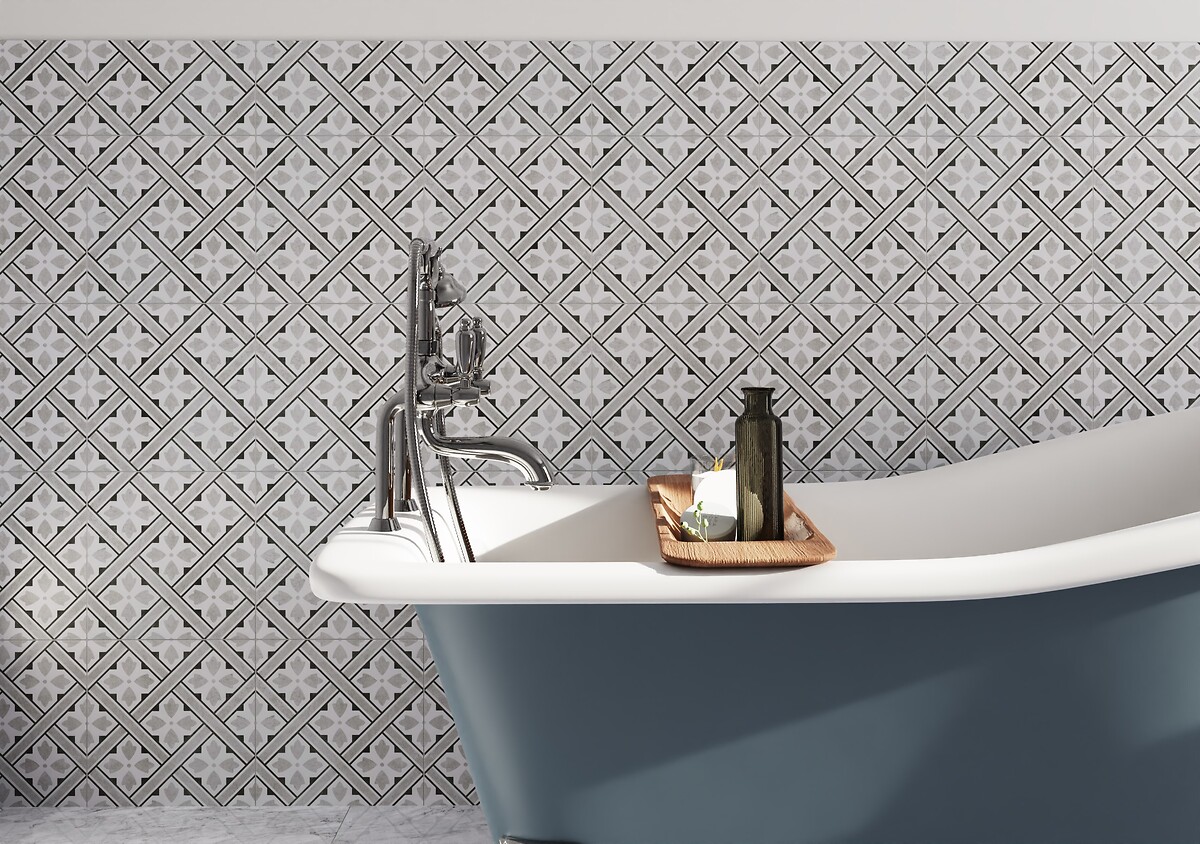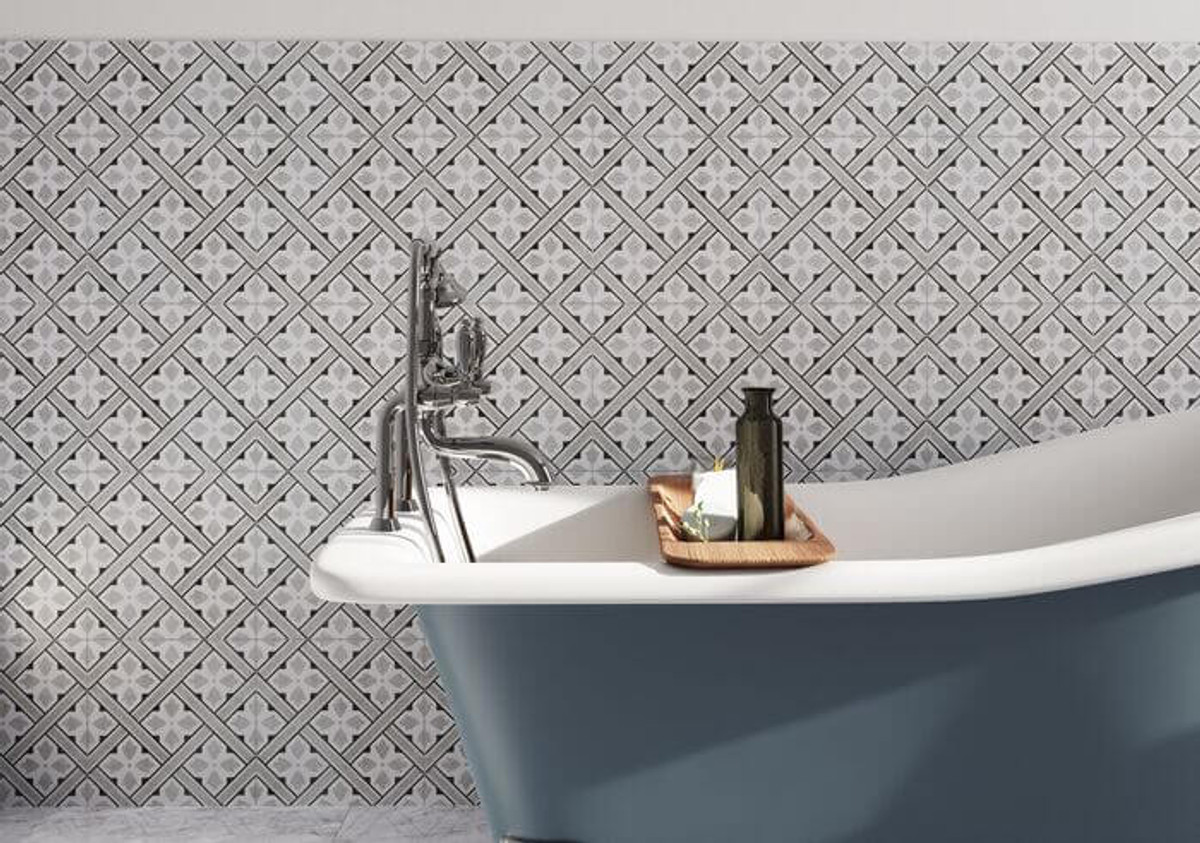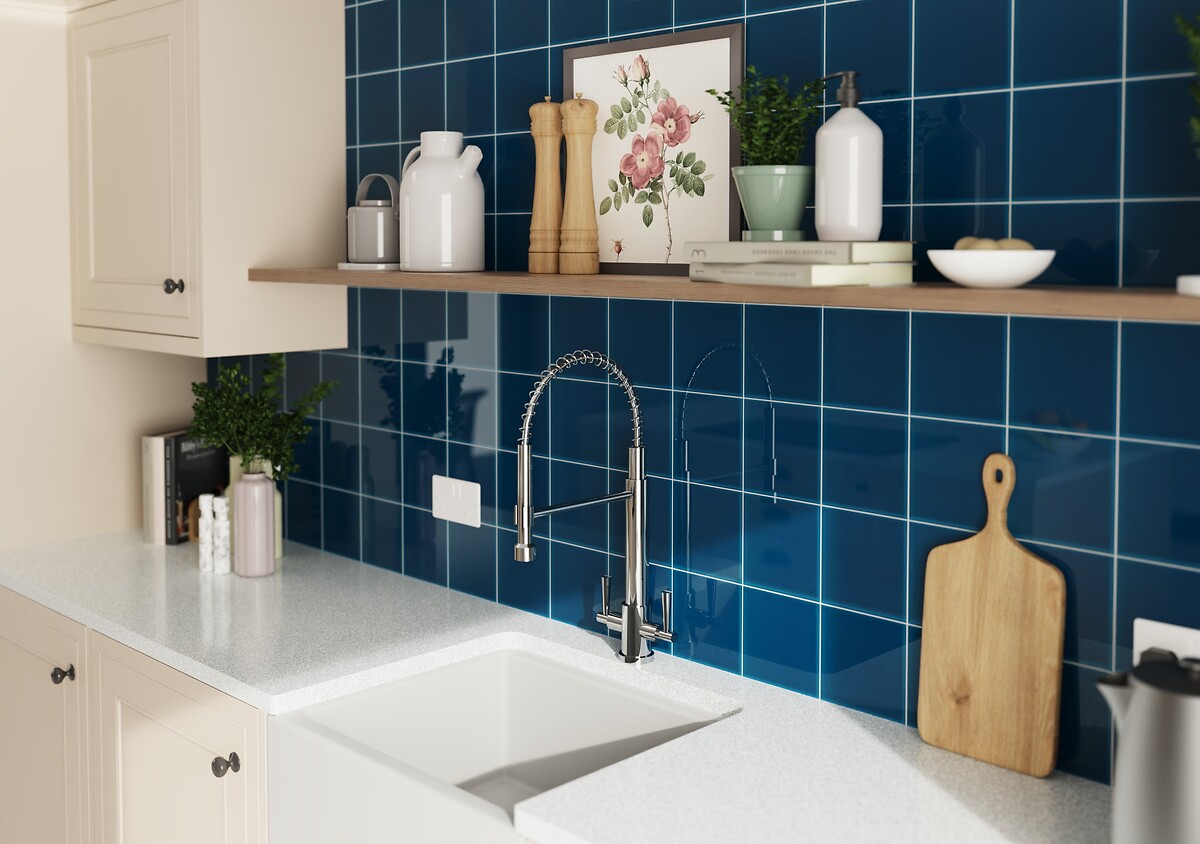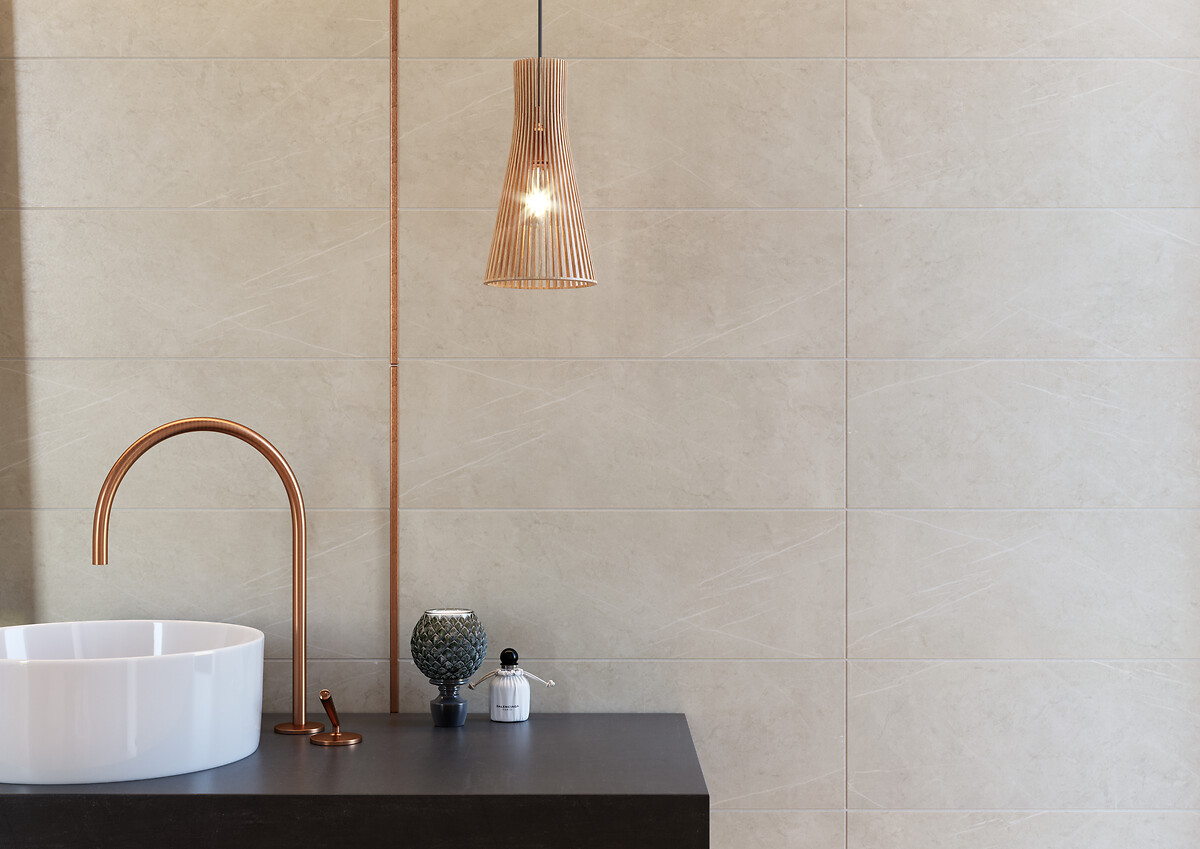Posted on Date 20th Dec 2023
How to set out wall tiles
Preparation is key when it comes to tiling your home. So, we've compiled this detailed guide on how to set out wall tiles. It may be tempting to jump straight into it, but we recommend giving yourself some time to plan. Knowing exactly what you're going to do ensures you'll have enough tiles and materials to complete your project.
Planning also gives you the opportunity to set out your wall tiles using actual tile sizes, including the joint width, avoiding being left with small, awkward gaps at the edges. Setting out your wall tiles is an important step to ensure perfect installation.
There are a few ways you can set out your wall tiles, with the following being a popular method.

Before you start setting out your wall tiles
There are a few essential tools you need for setting out wall tiles. We recommend having the following:
- Pencil
- Tape measure
- Spirit level
- Claw hammer
- General purpose saw
- Wooden batons x 2
Planning the layout of your tiles
It's important to plan where you'll be laying your tiles. There is no hard or fast rule, and it will often depend on things such as the positions of windows, walls etc. but it's often wise to use the natural focal point of the area to be tiled and have this as your starting point.
How to set out wall tiles a step-by-step guide
Step 1: Start at the centre of your wall
It's always advisable to start tiling your grid in the centre of a wall, as it's easier to make sure your pattern is symmetrical. It also means any half-tiles you may need can go at the end of each row and will be of matching size.
While it's tempting to begin in the corner as you would when painting, it may leave you with wonky rows and a messy finish by the time you're done (which no one wants!).
Before starting, you need to know how many tiles you will need per row and to do this, you need to make a gauge rod.
Step 2: Use a gauge rod
A gauge rod is a clever way of helping you set out wall tiles. It helps you work out the best tile positions and ensures you're not left with thin strips of tile for the edges. Gauge rods also help you see how tiles are going to fall around windows and doors.
The good news is that you don't need to go out to buy a special gauge rod for setting out tile walls you can make one!
Simply get a 50mm x 25mm piece of wood which is around 1800mm in length.
Once you've got your wood, lay it out on a flat surface, preferably the floor, and place a tile flush with the edge. Mark the wood at the edge of the tile with a pencil then position a spacer at the edge of the tile and place a second tile against the spacer. Mark the wood at the edge of the tile again.
Repeat this process until youve reached the end of the wood and, hey presto, you've got yourself a gauge rod.
Step 3: Start from the centre
Find the centre of your wall and mark it with a pencil line. Using the gauge rod, measure from the halfway point up and down so you can see where each tile will fall. Your outside tiles should be approximately the same size so you may need to reposition your central vertical line to get the right position.
Step 4: Raise the gauge road
Once you've worked down the wall to where the bottom tile is about half a tile, re-arrange slightly by raising the gauge rod to half a tile and mark the wall once you are happy.
Step 5: Create a horizontal line
Next, draw a line straight line across the wall and then get a piece of wood and gently nail it to the wall (dont do it too hard as youll need to take the wood off later). Use a stud detector to check for pipes or wiring in the wall.
Use this piece of wood as the starting point to tile up from. This will prevent the tiles from moving and ensure your tiling is nice and straight.
Step 6: Add a vertical line
Finally, use your gauge rod vertically and knock in another piece of wood up the wall to make a right angle to ensure your tiles follow a straight line up the wall.
Step 7: Start tiling!
With the right angle of wood nailed into the wall, you have set out your wall tiles perfectly. Now you have to tile!
Watch our video
Tile Warehouse has teamed up with hit YouTube channel Proper DIY to show you the best way to dry lay your wall tiles before fitting them in your home. Make sure to watch our video. It's packed full of really useful tips and advice for setting out wall tiles.
Need more information?
If you have any questions regarding setting out wall tiles, then feel free to contact our Customer Services team using our web chat facility. They will be more than happy to help.






